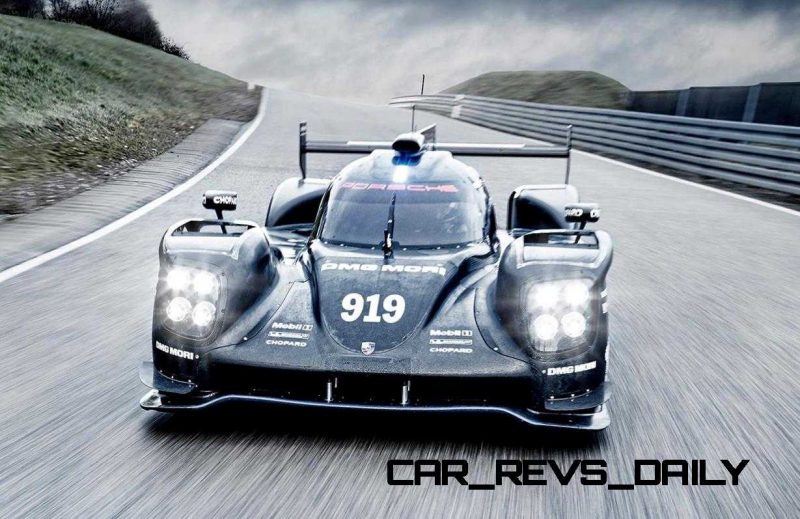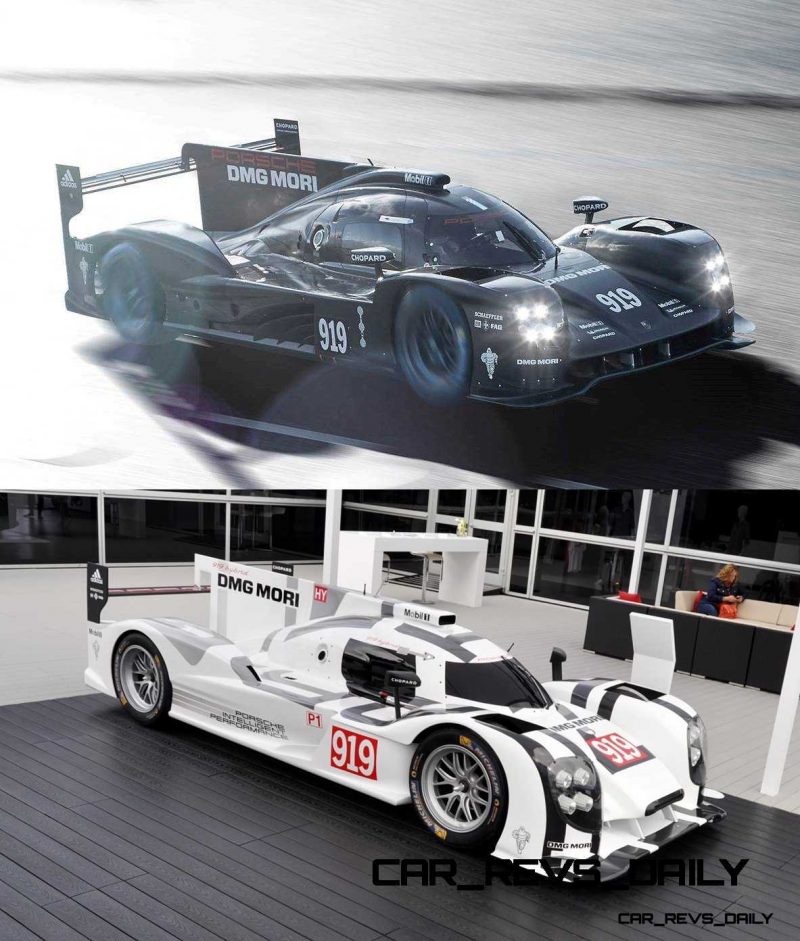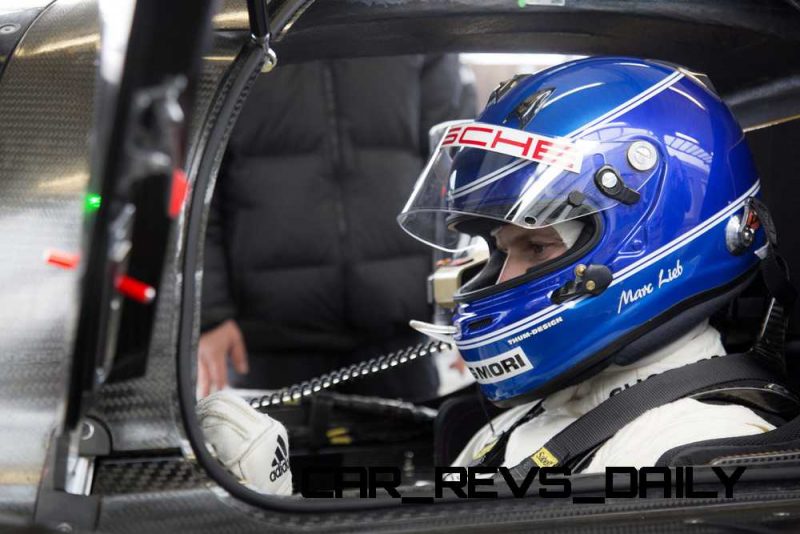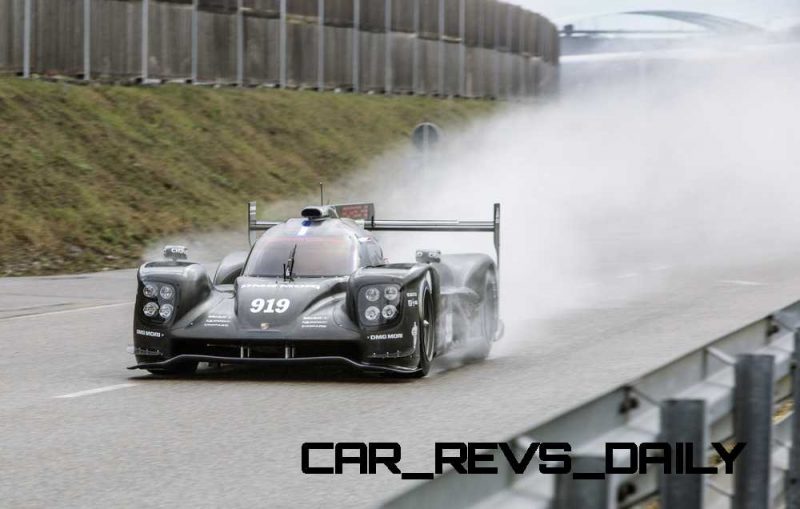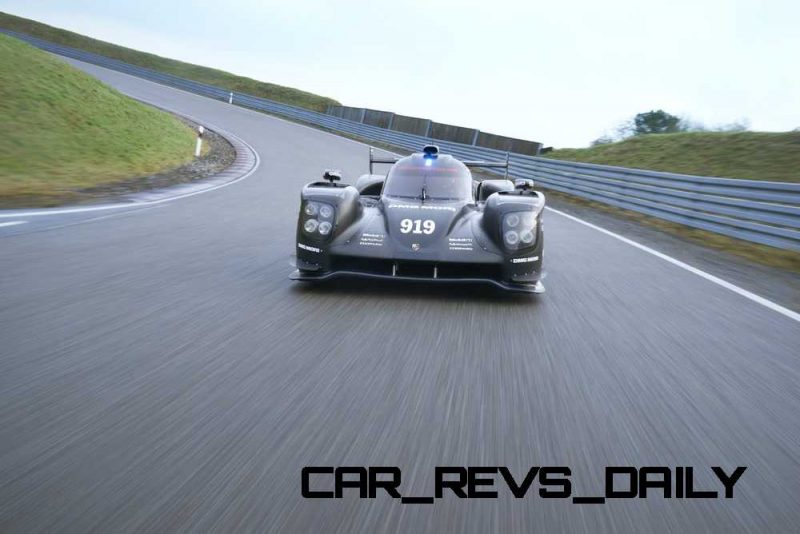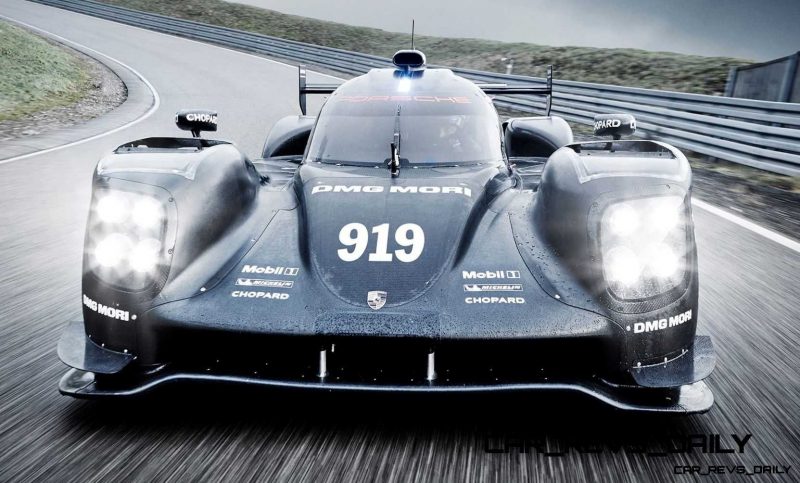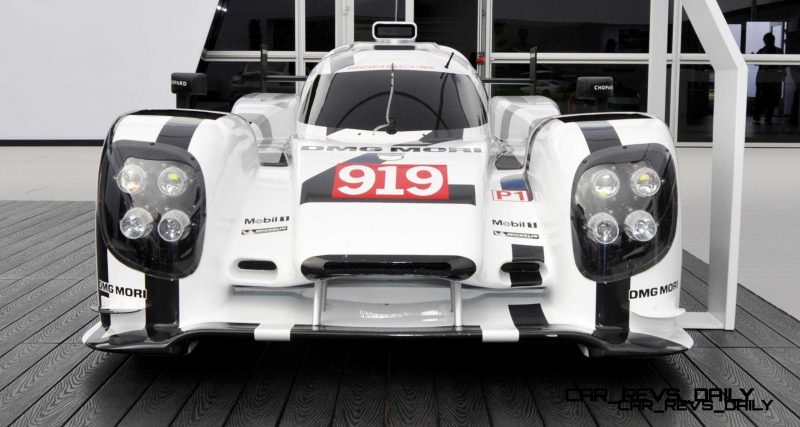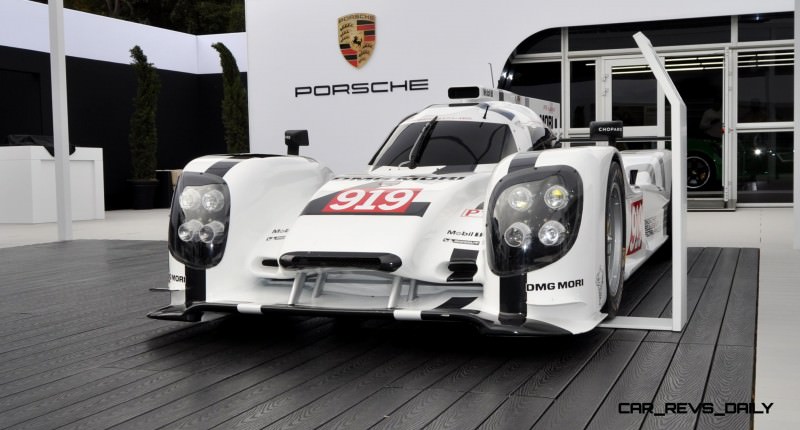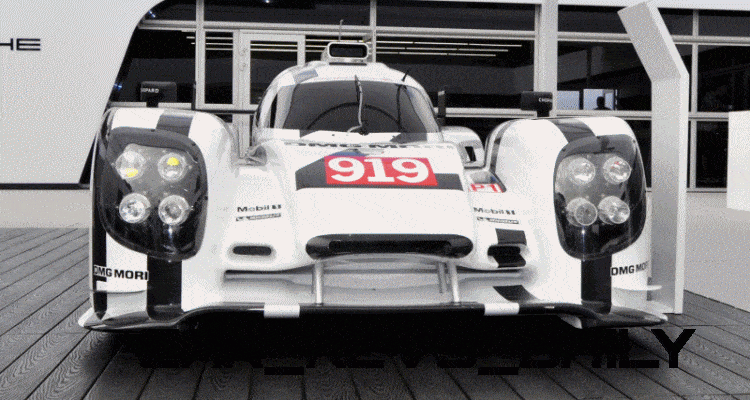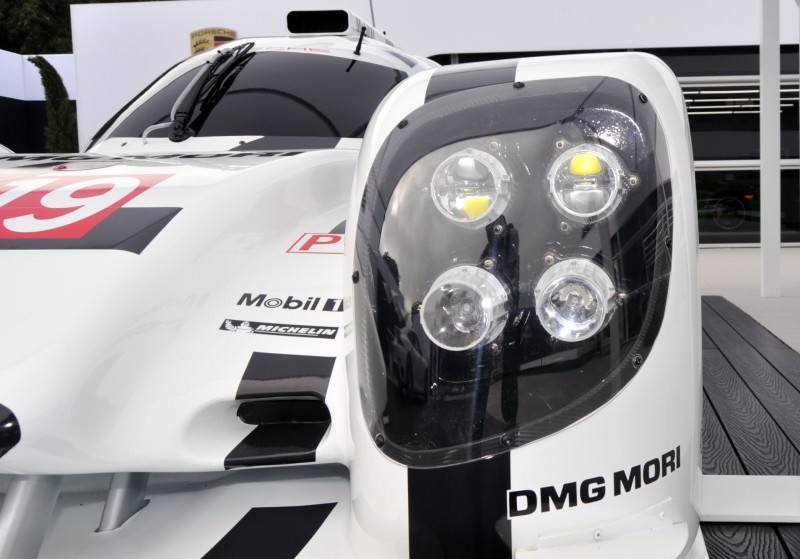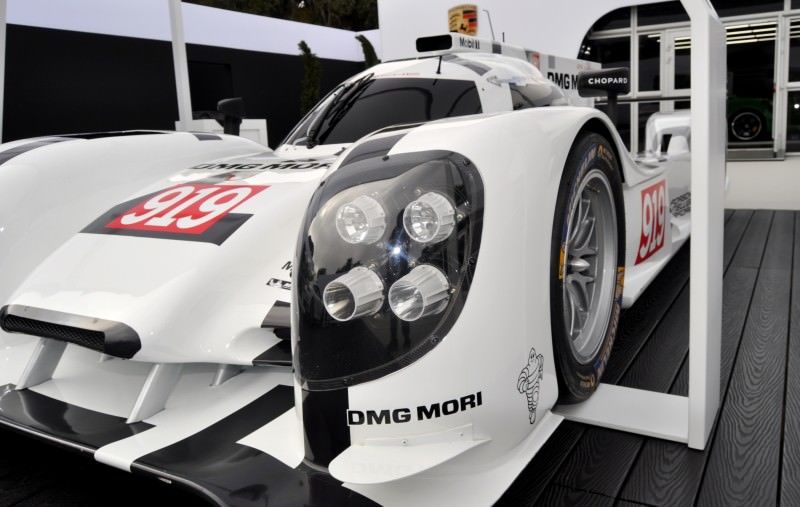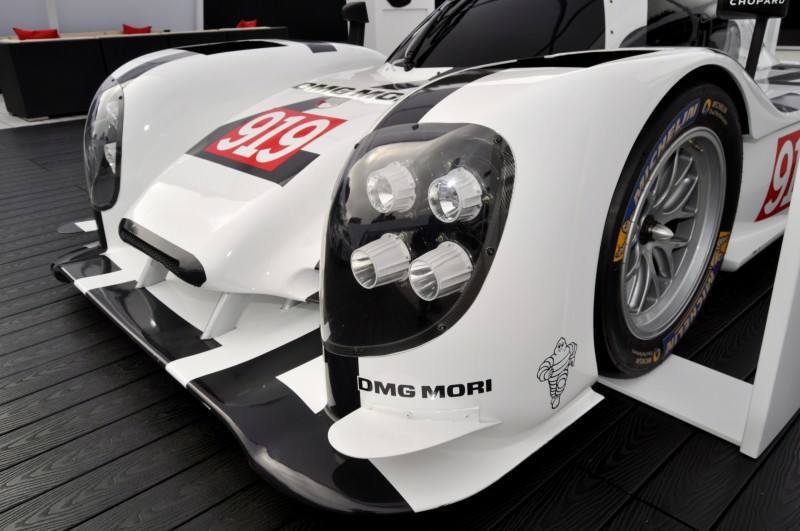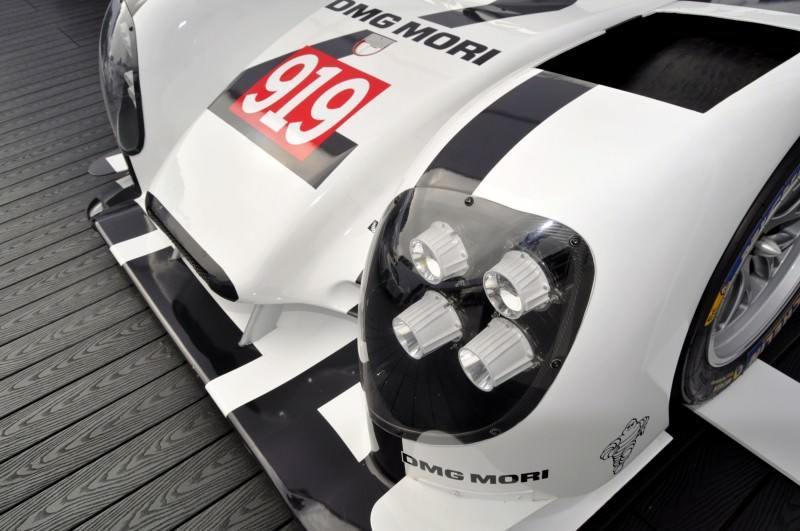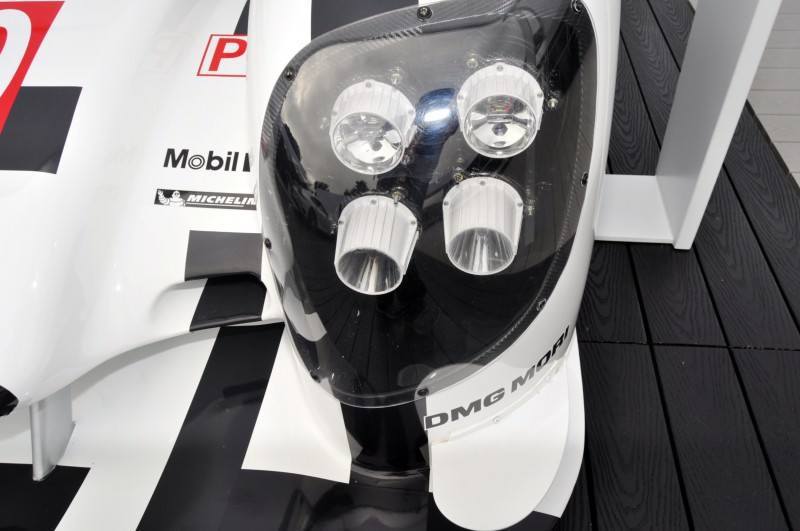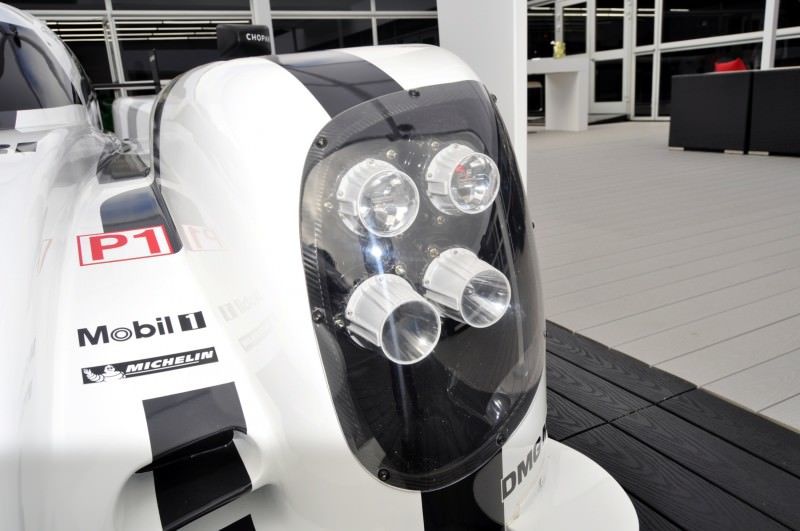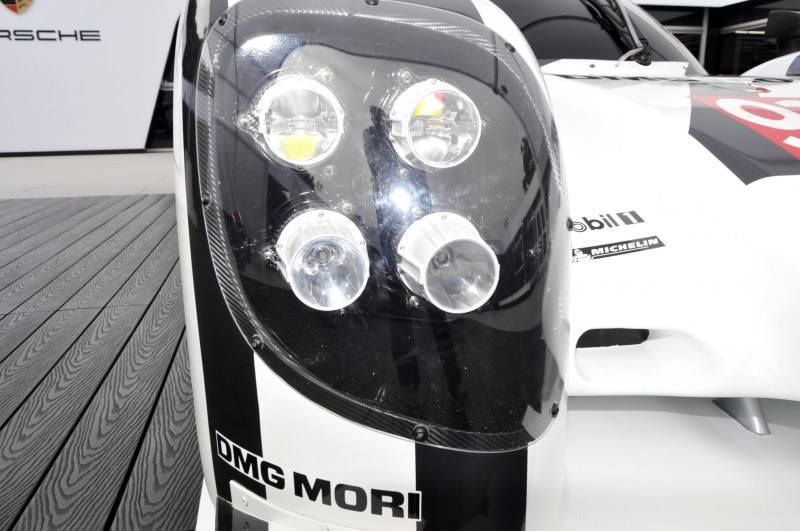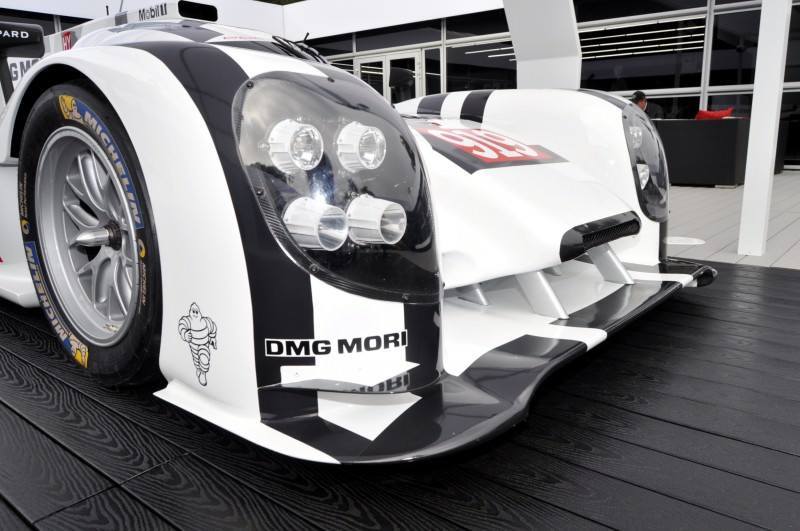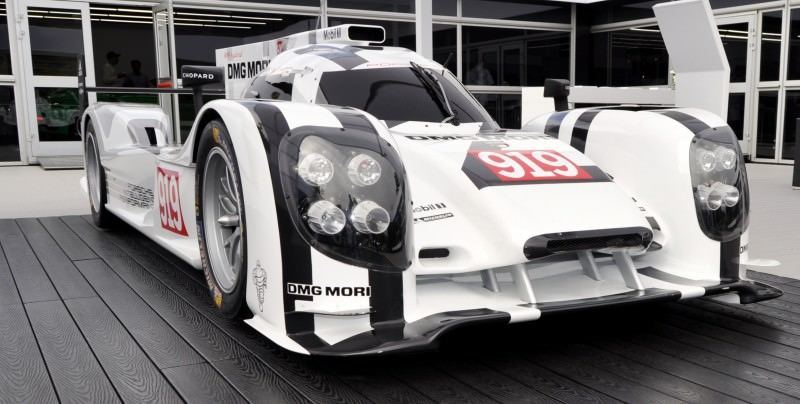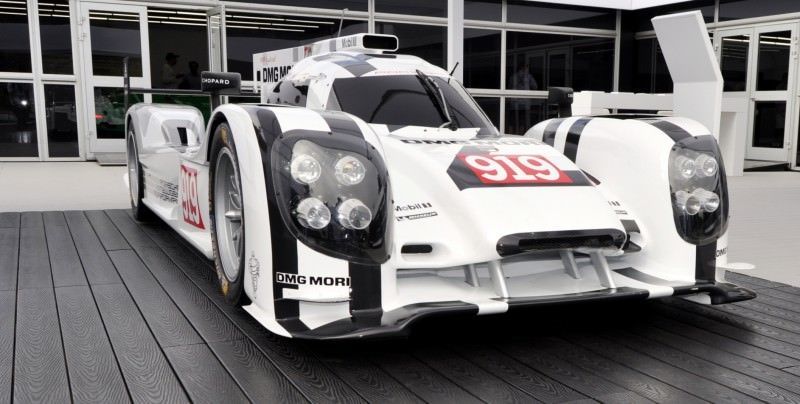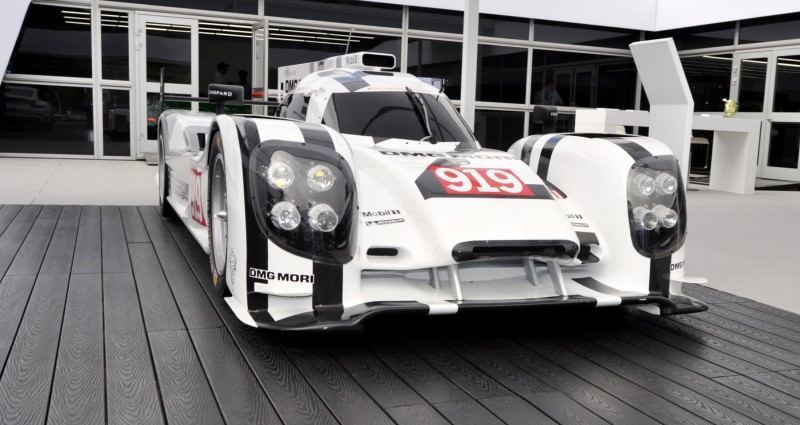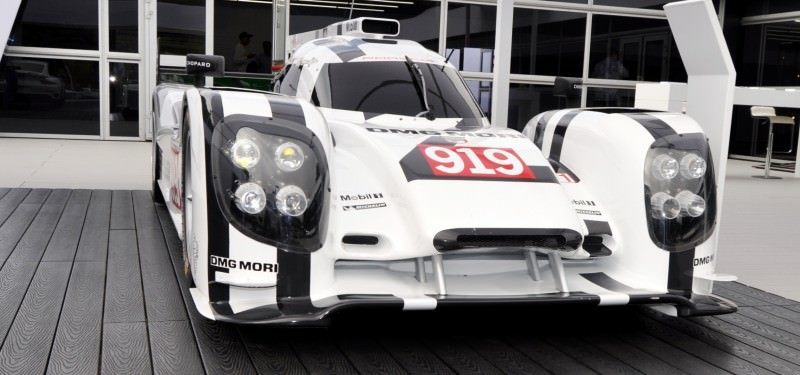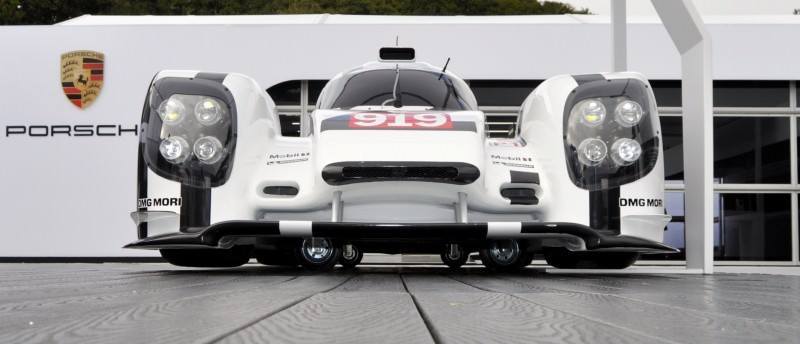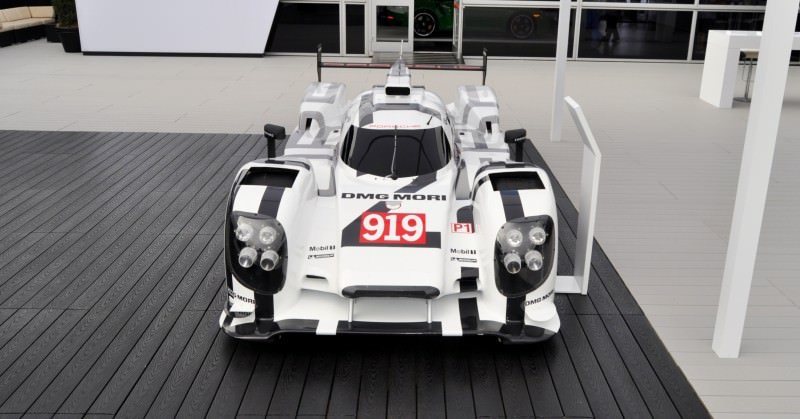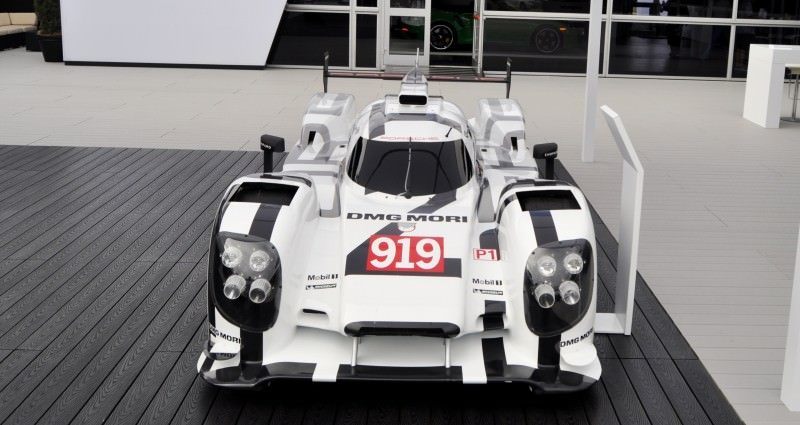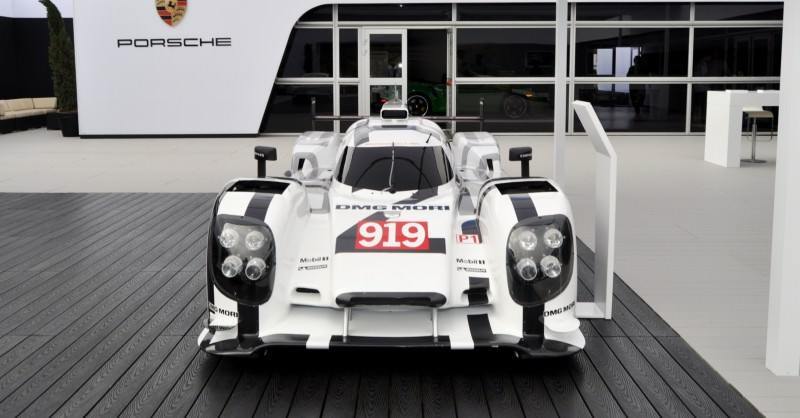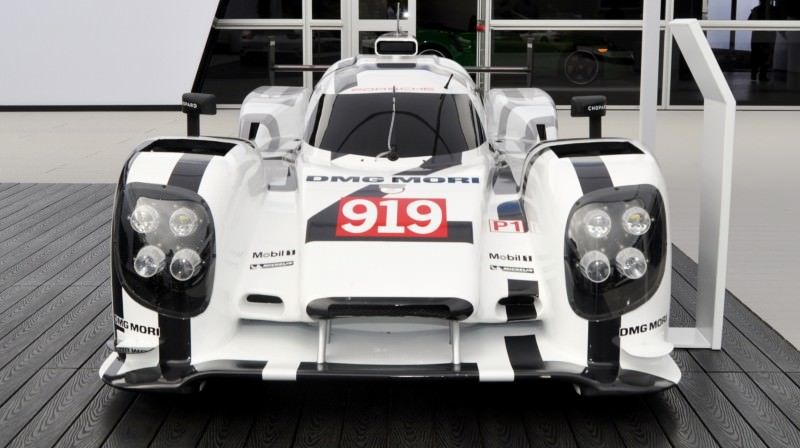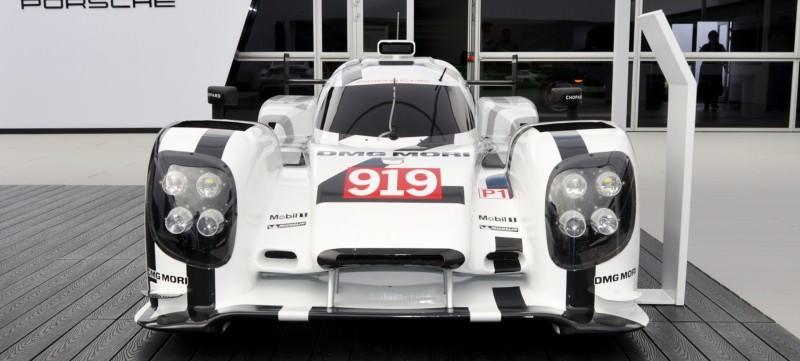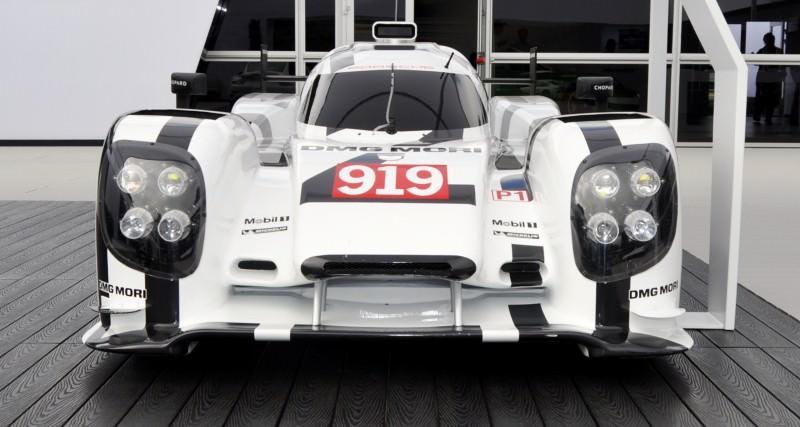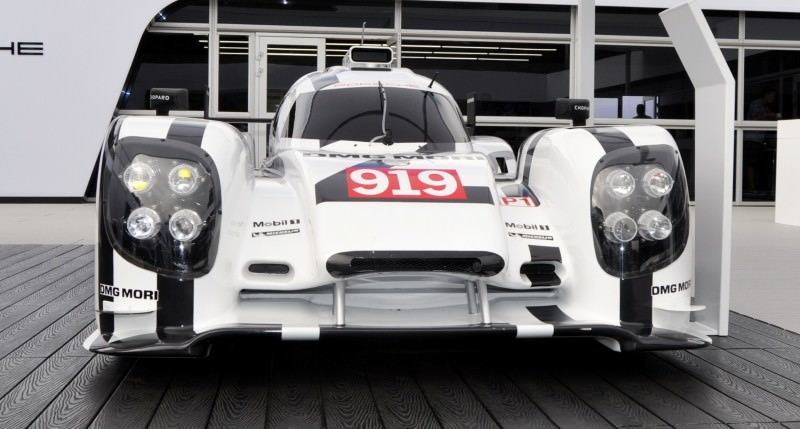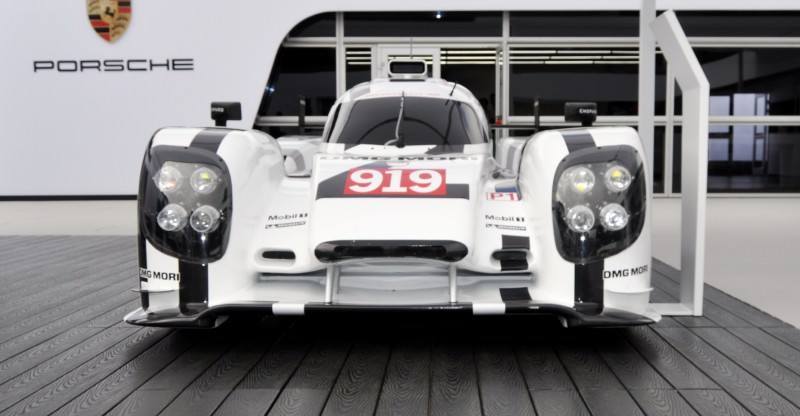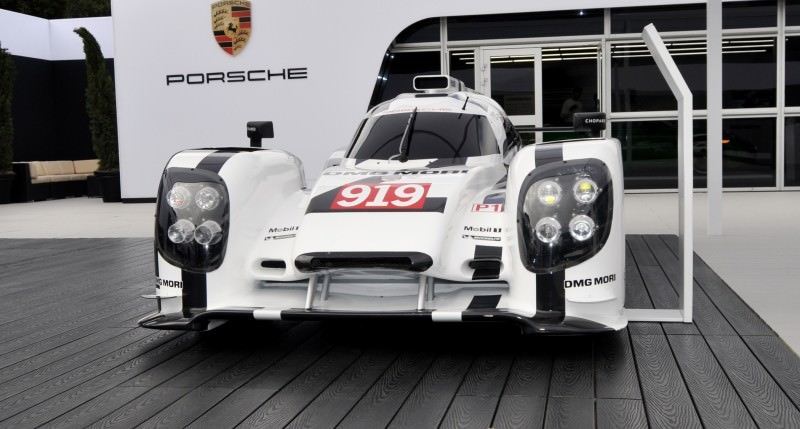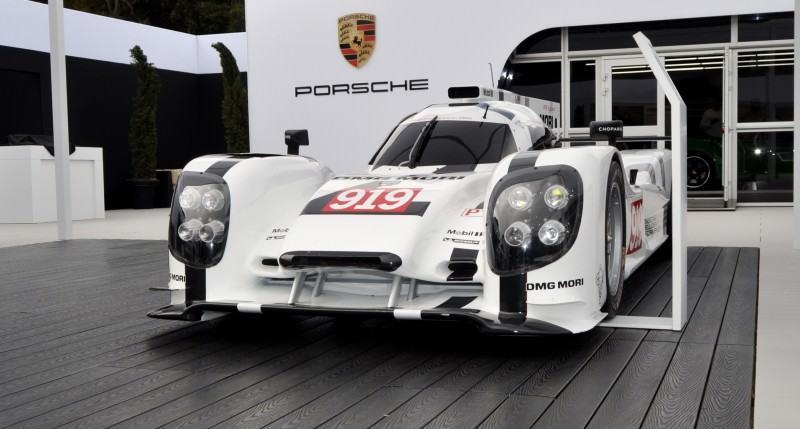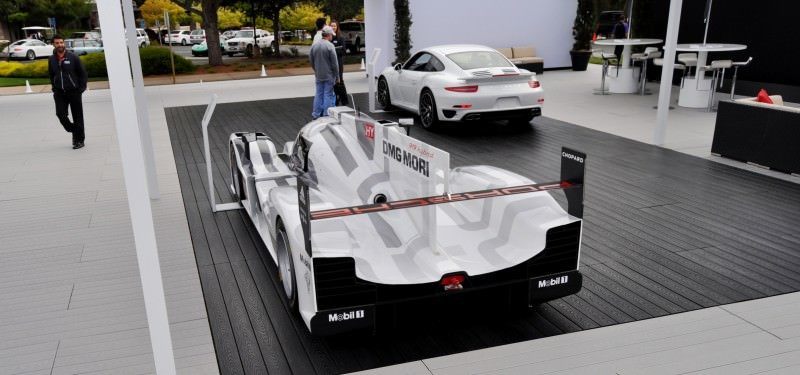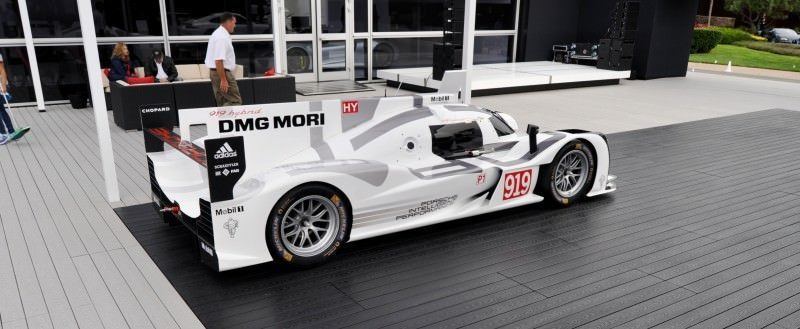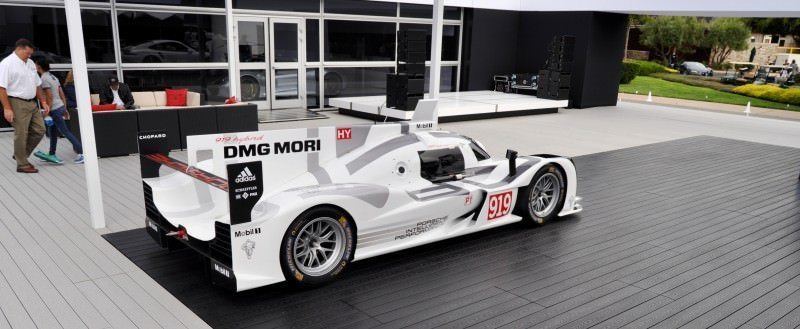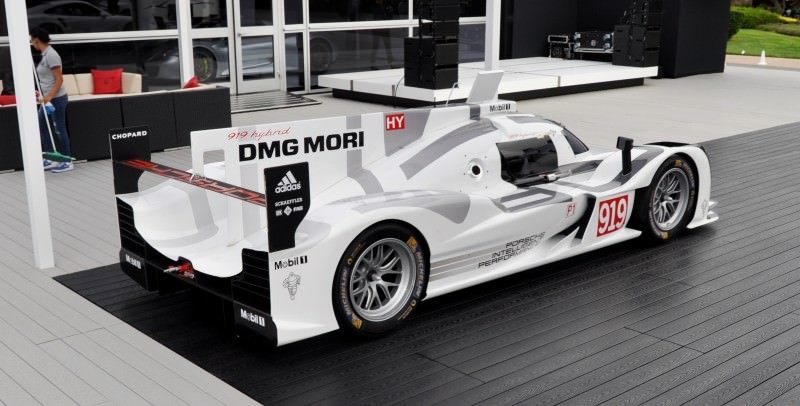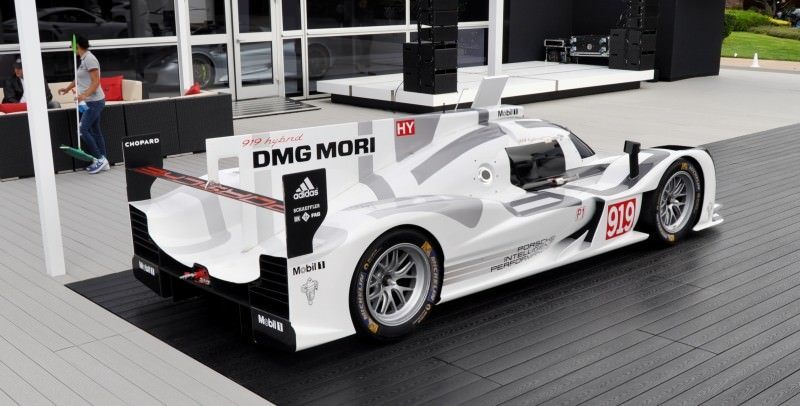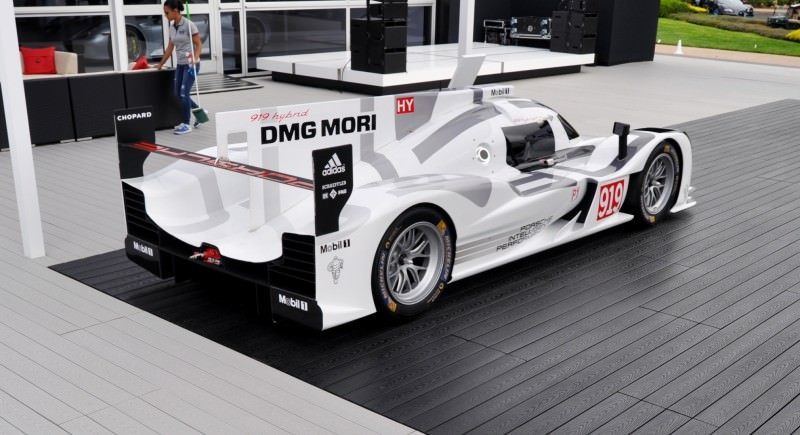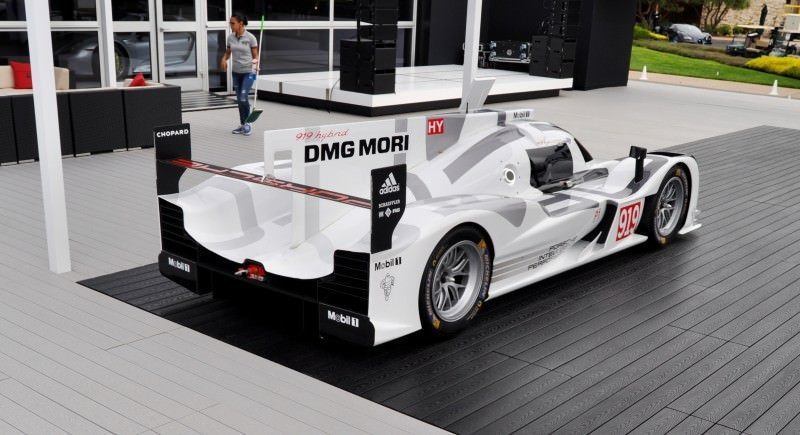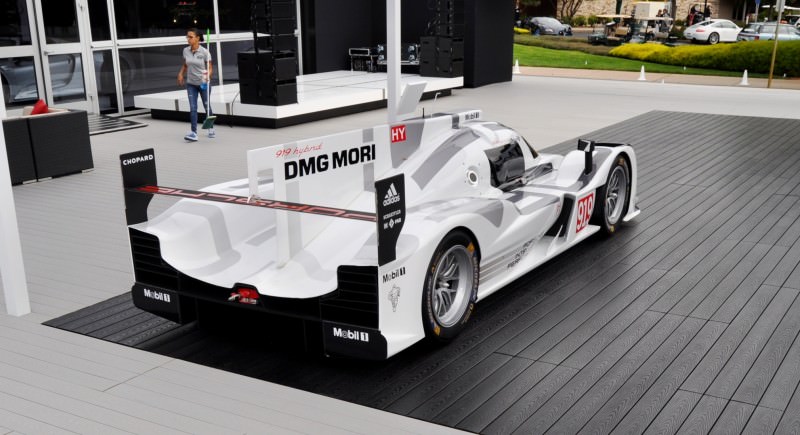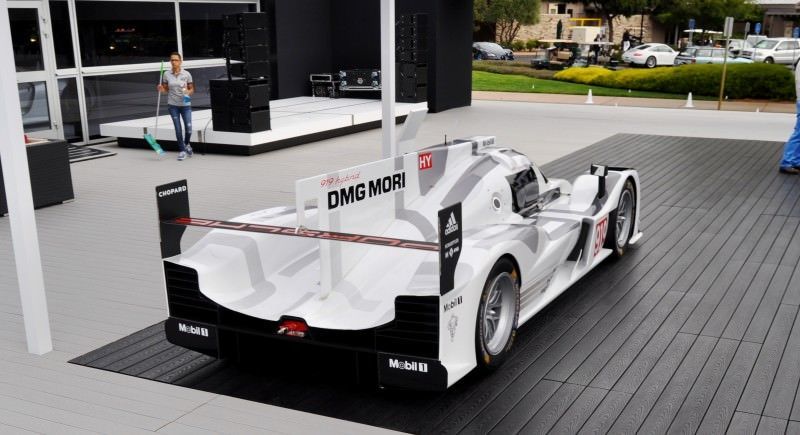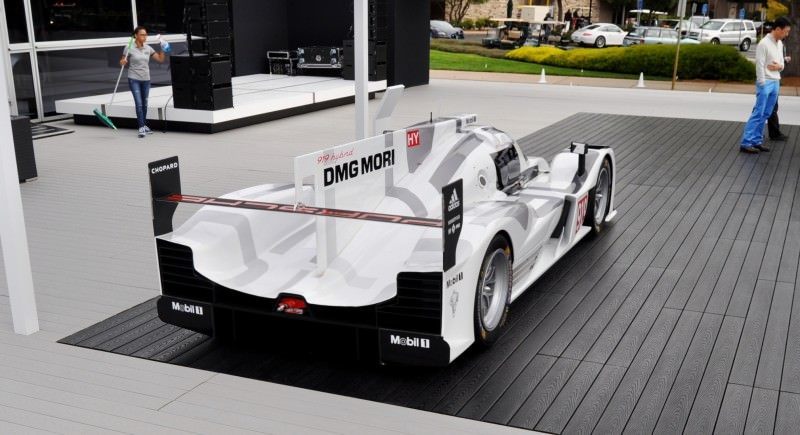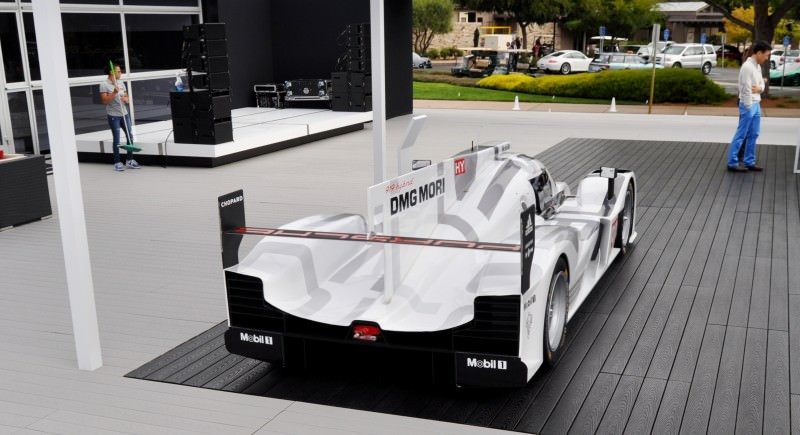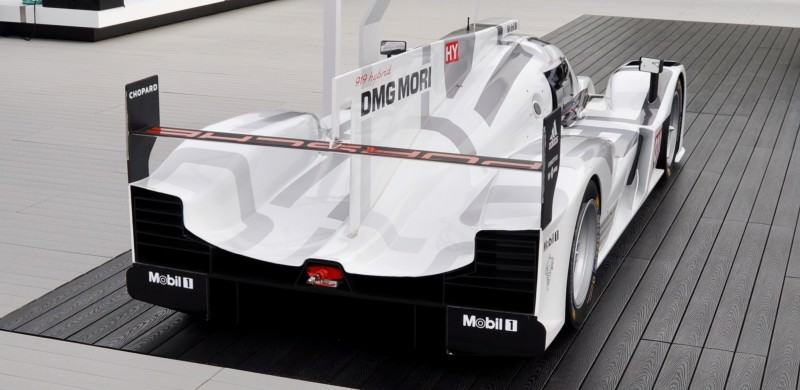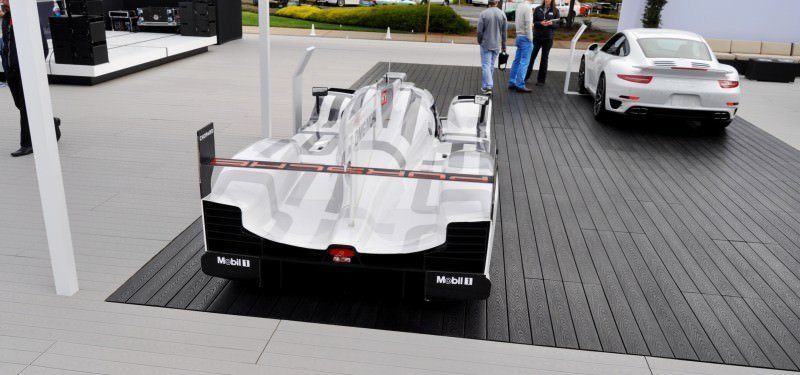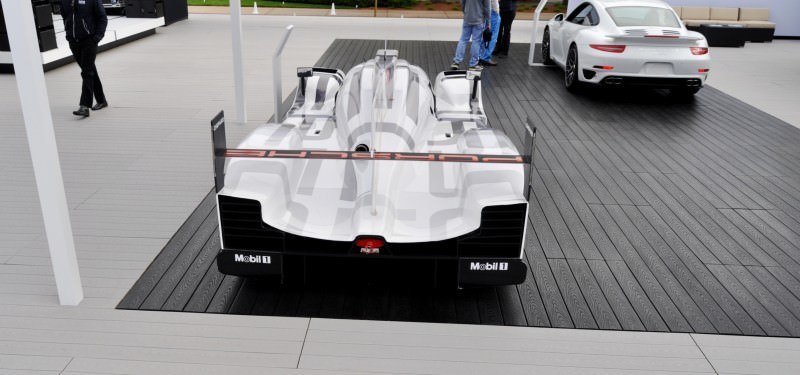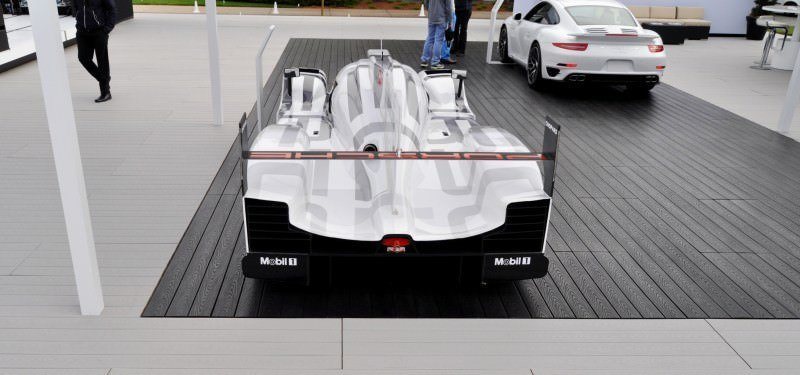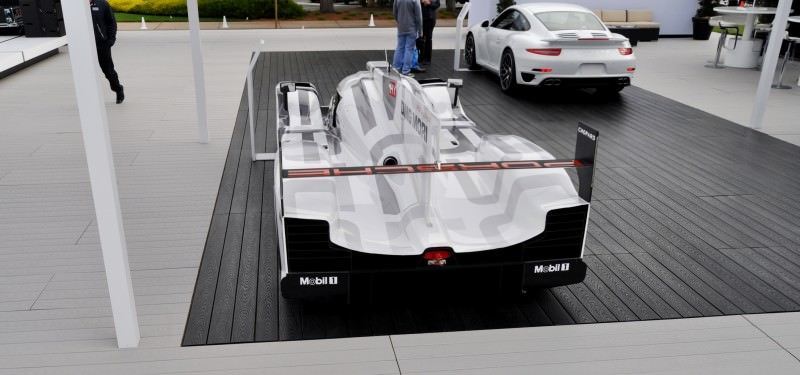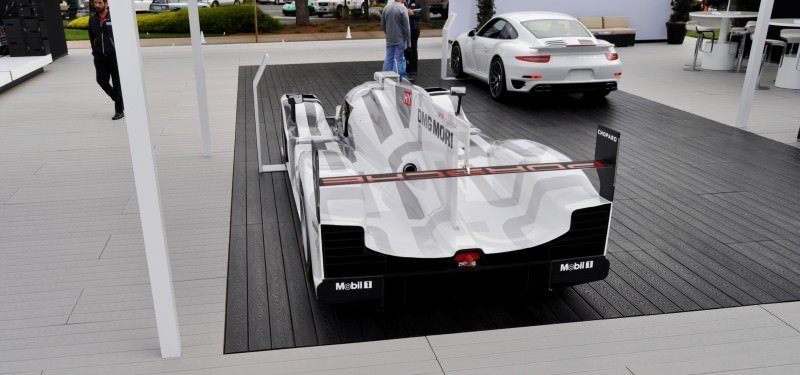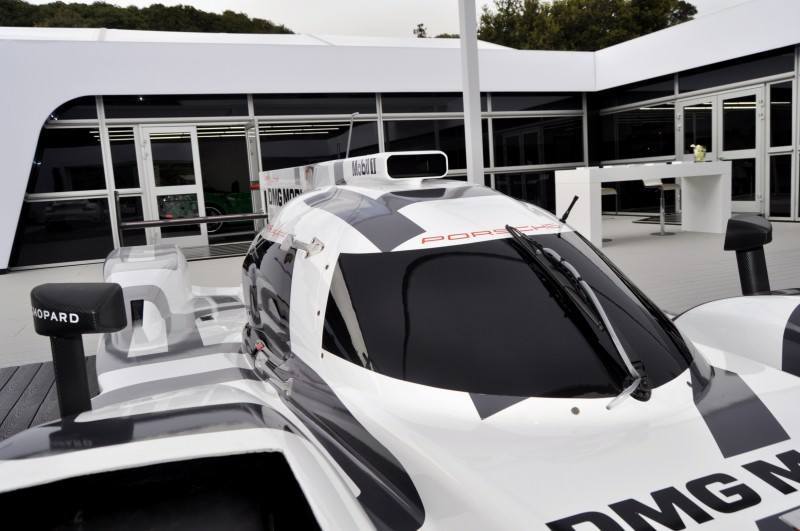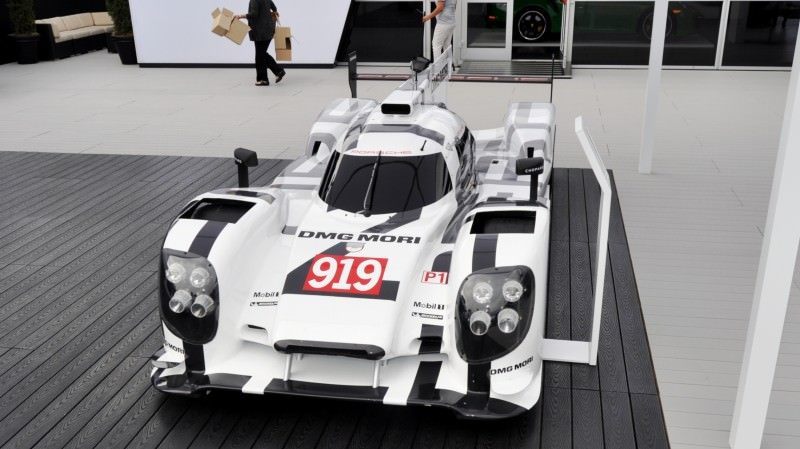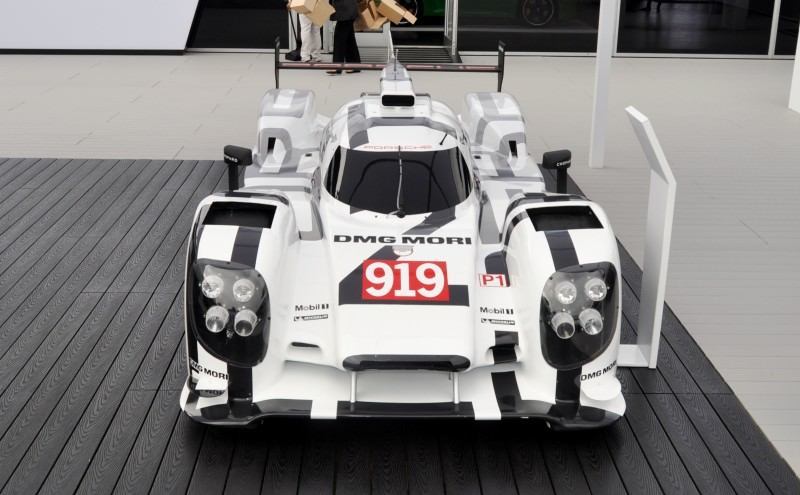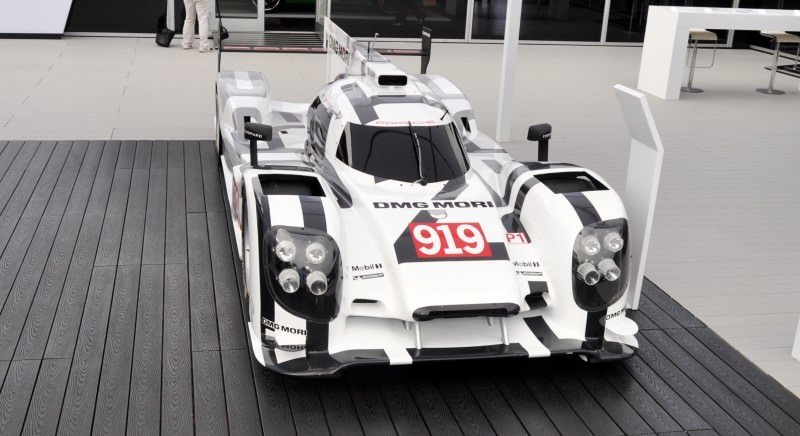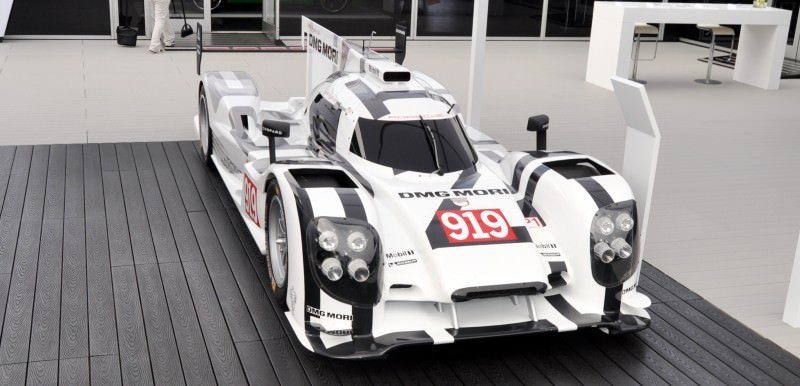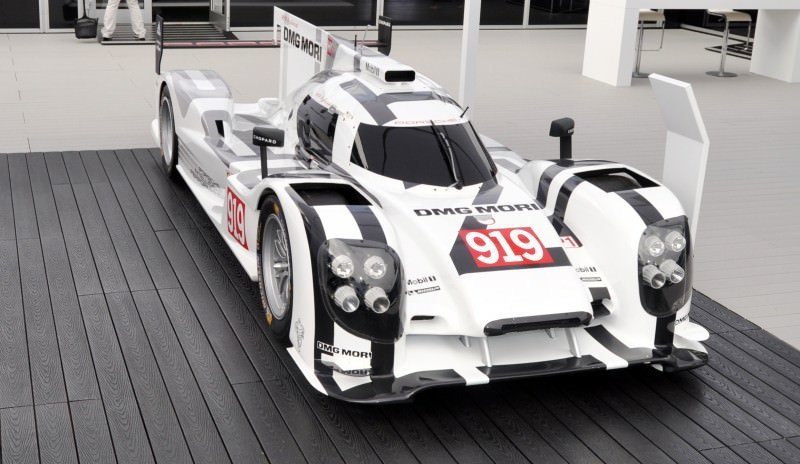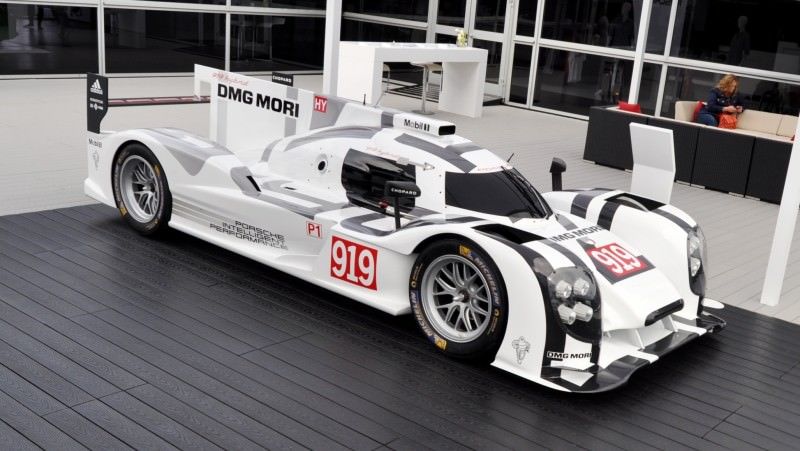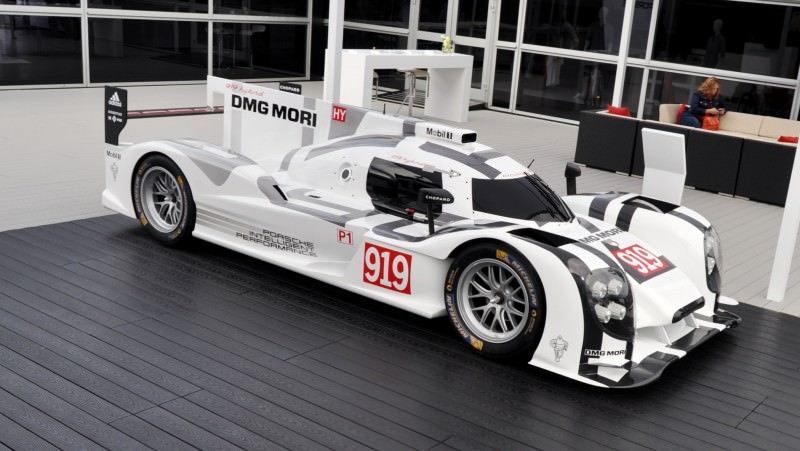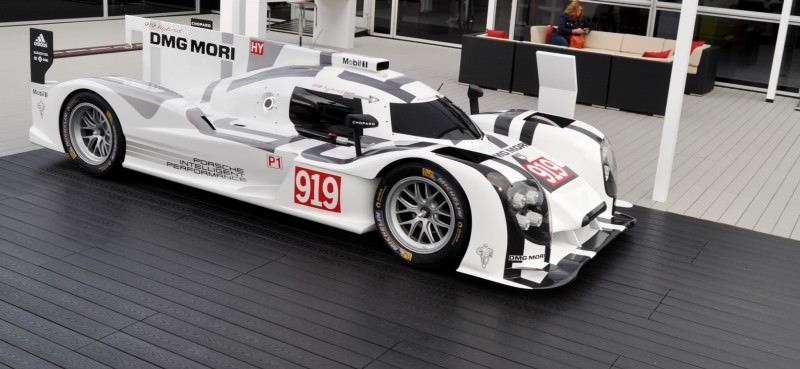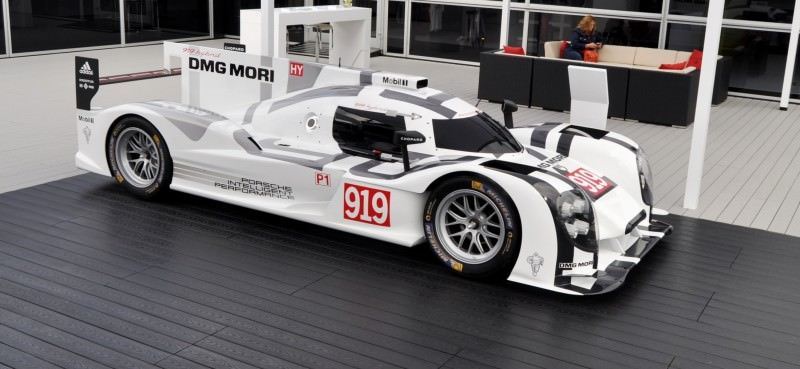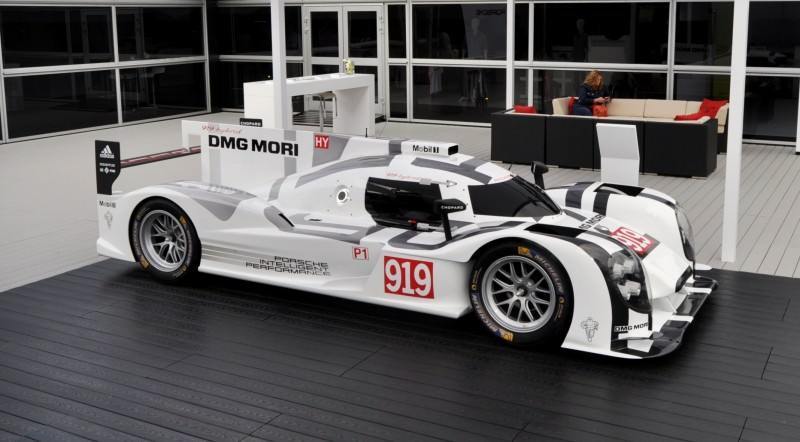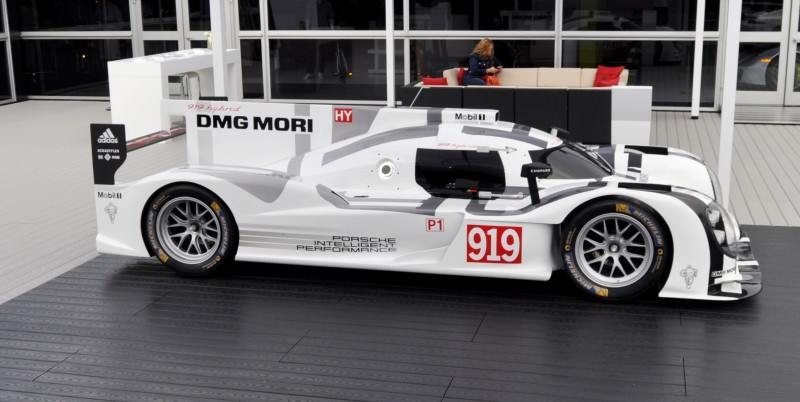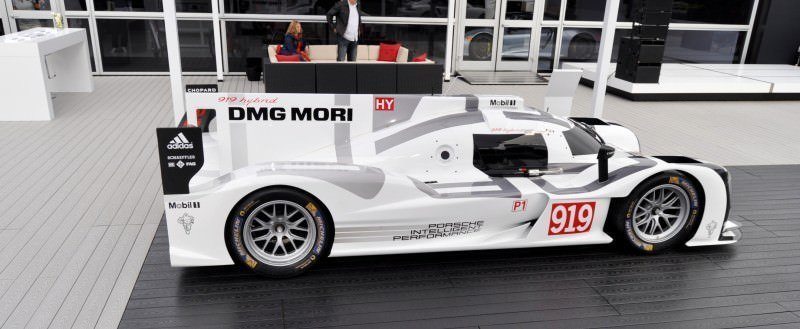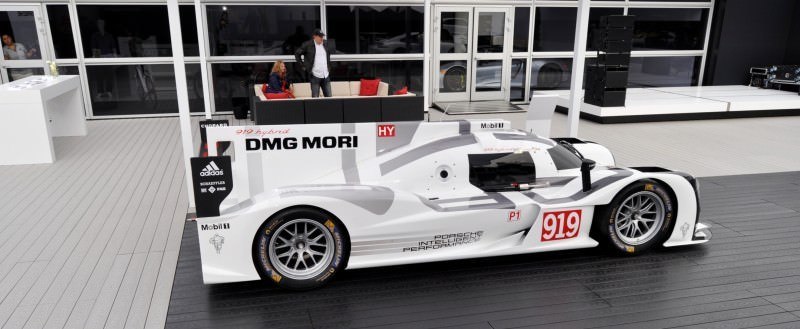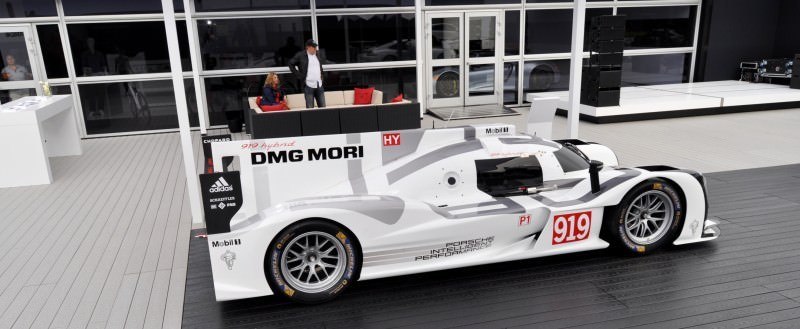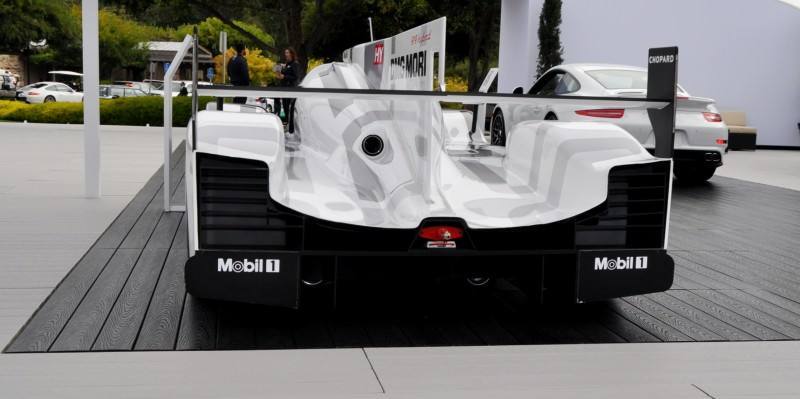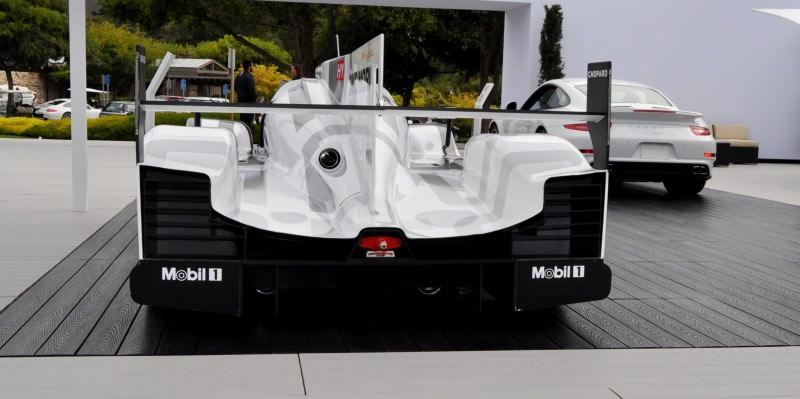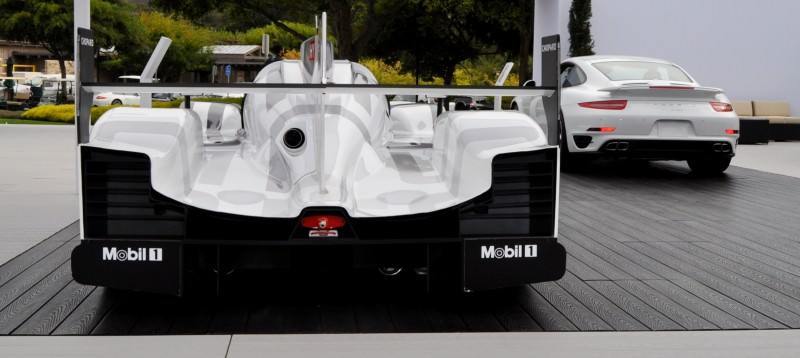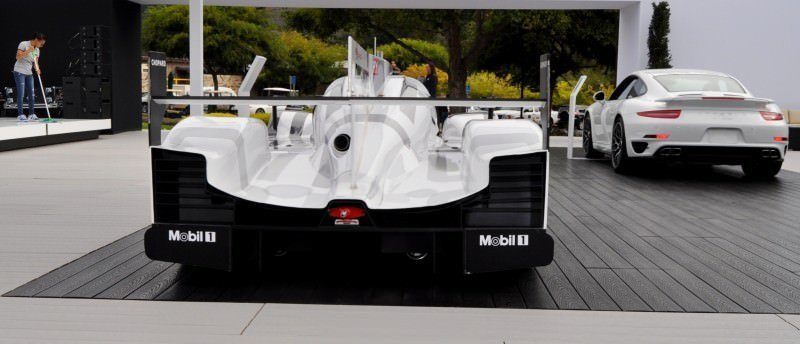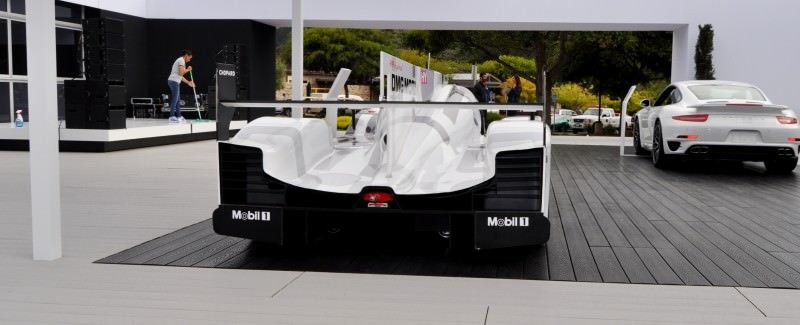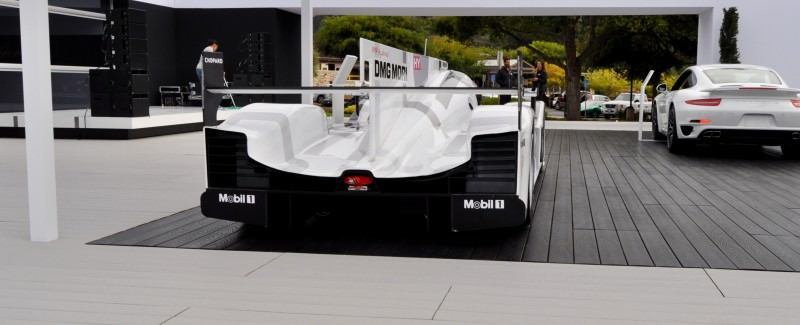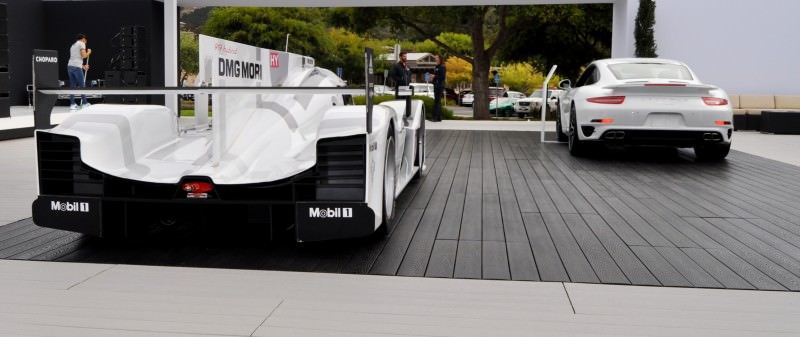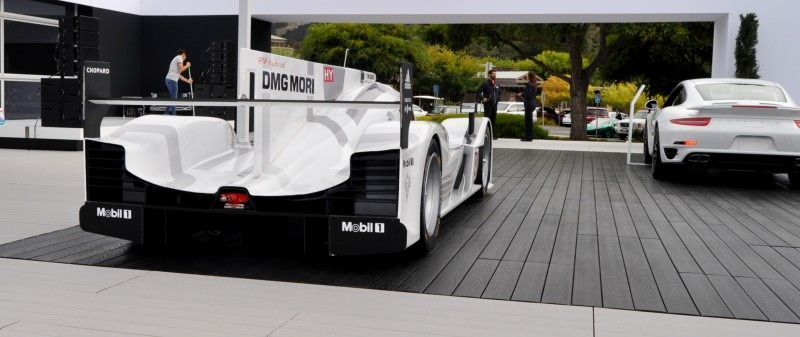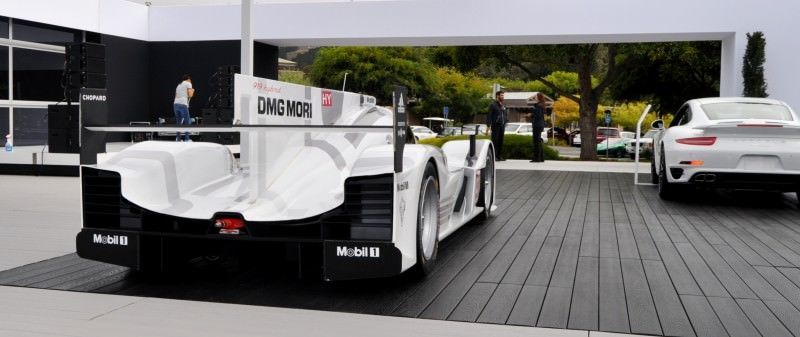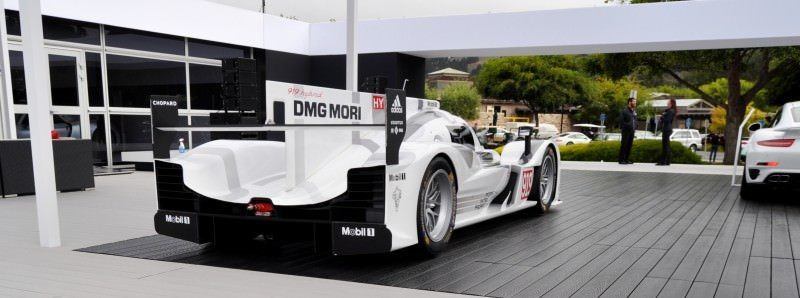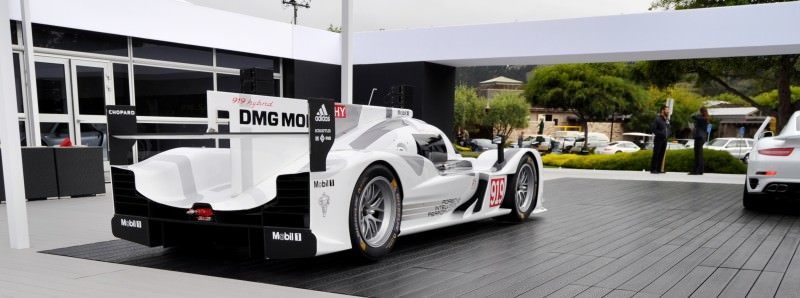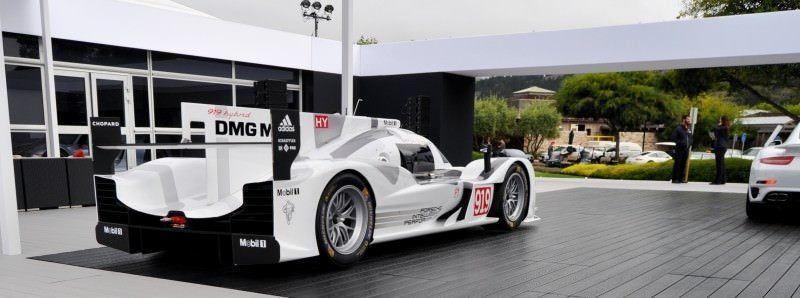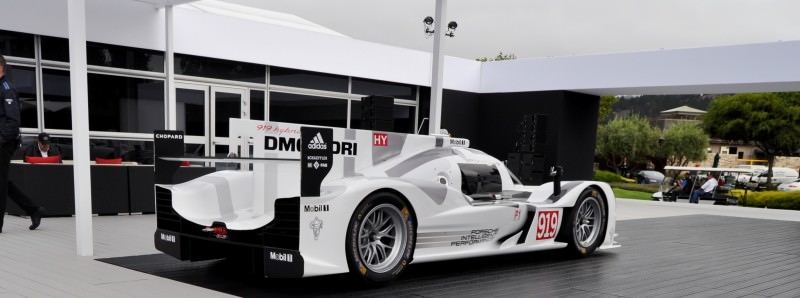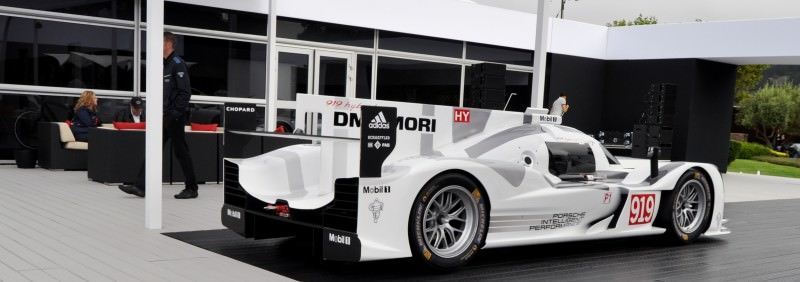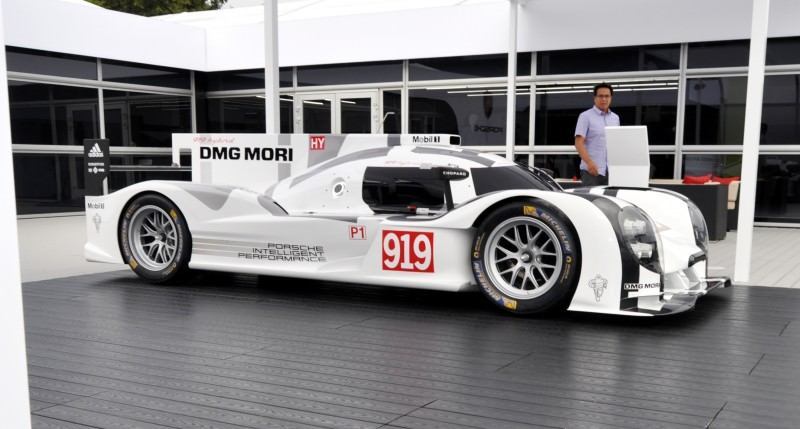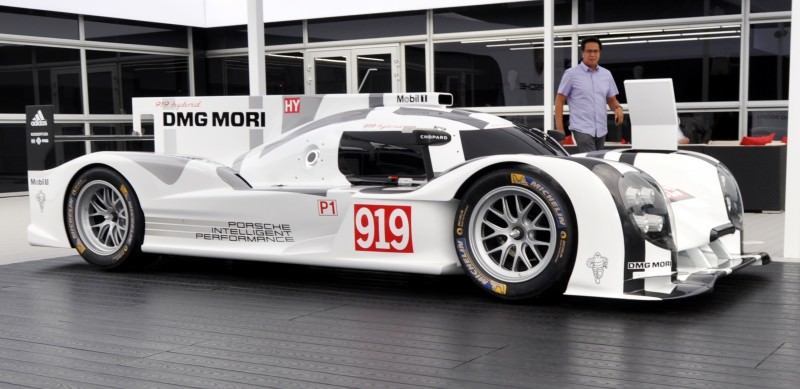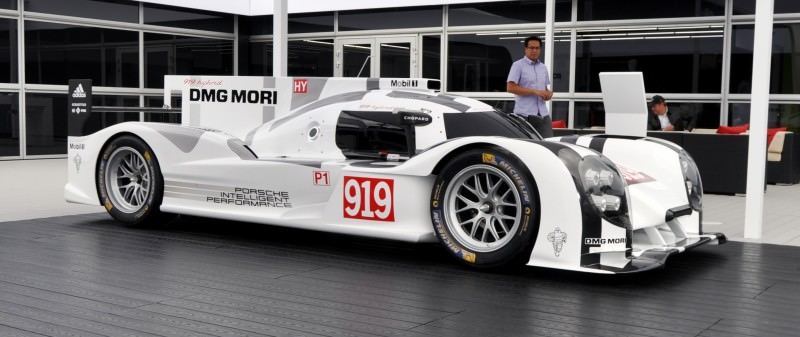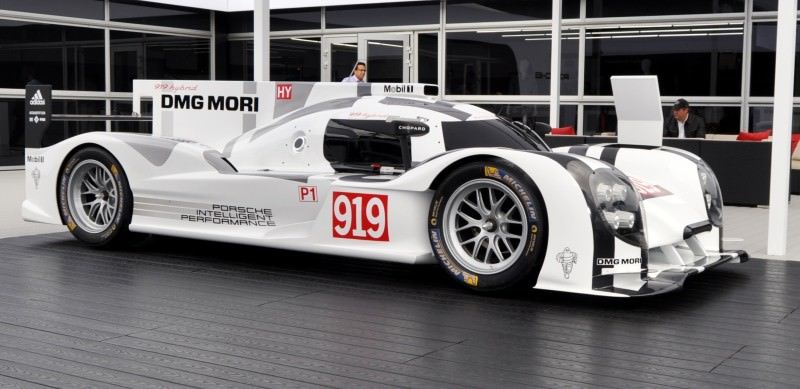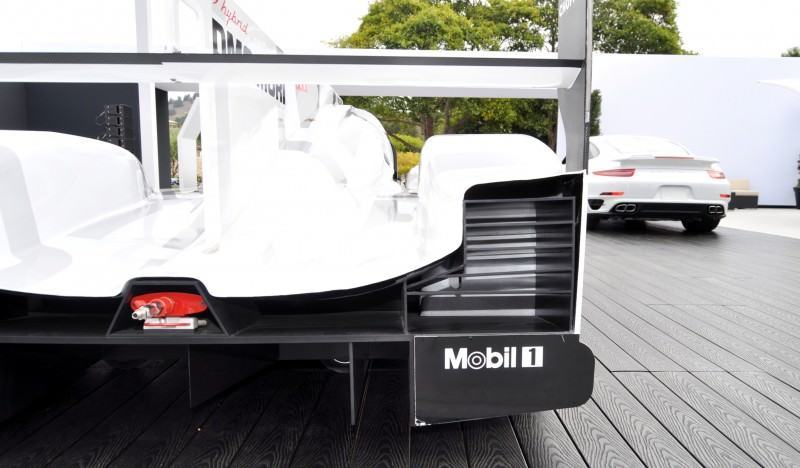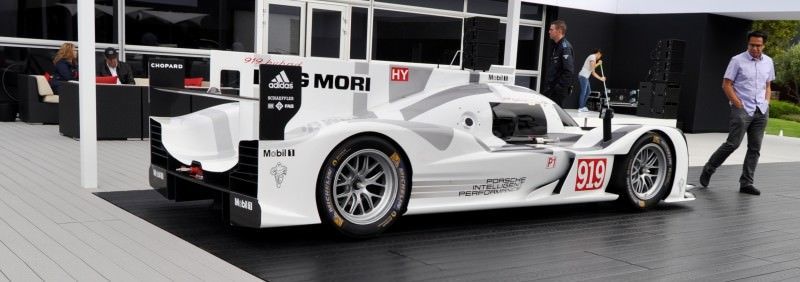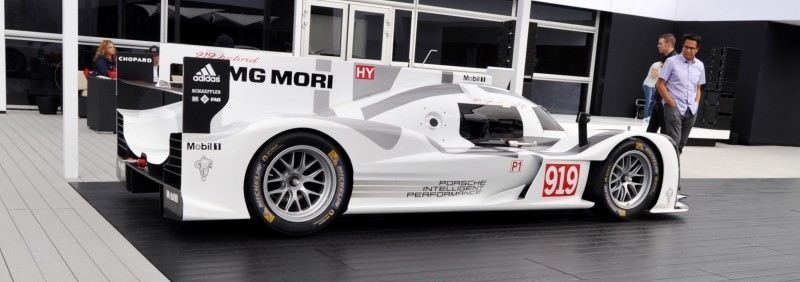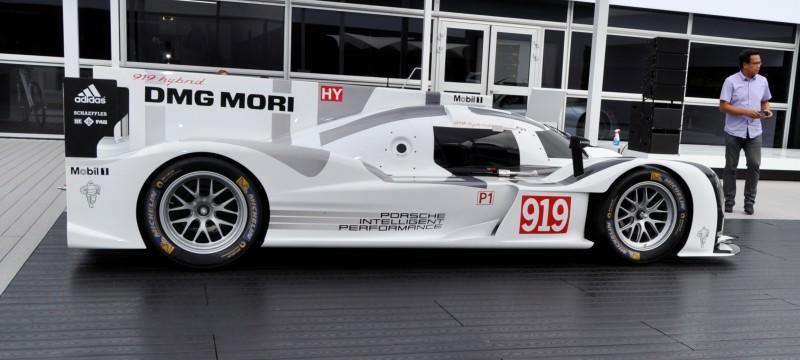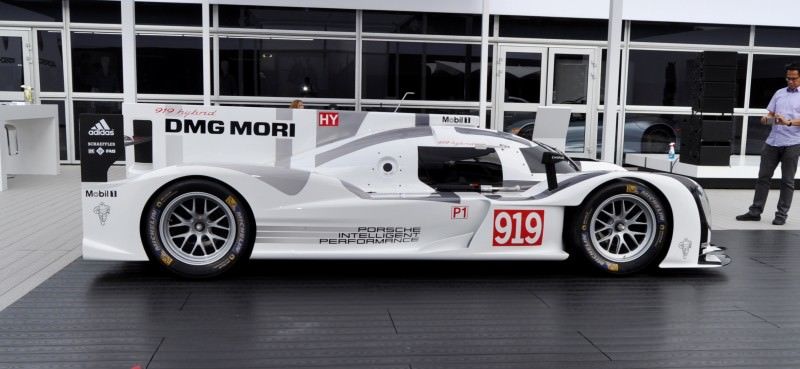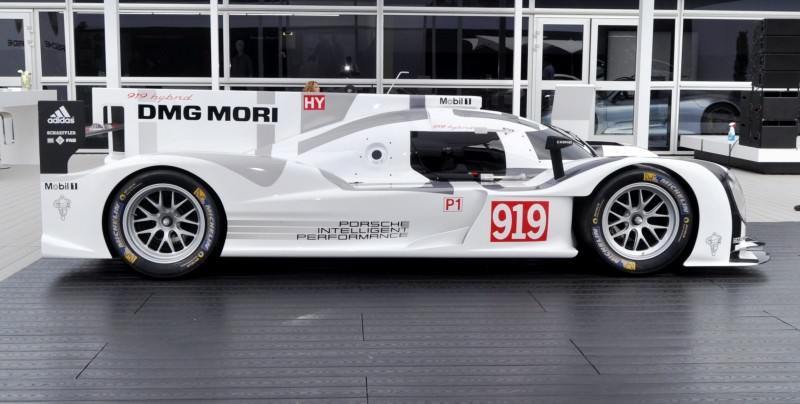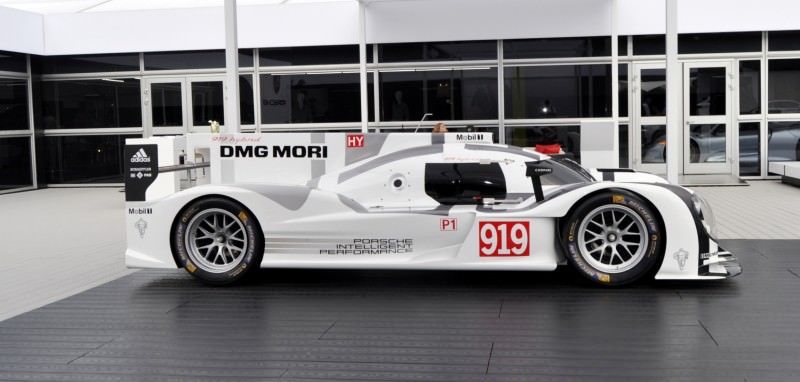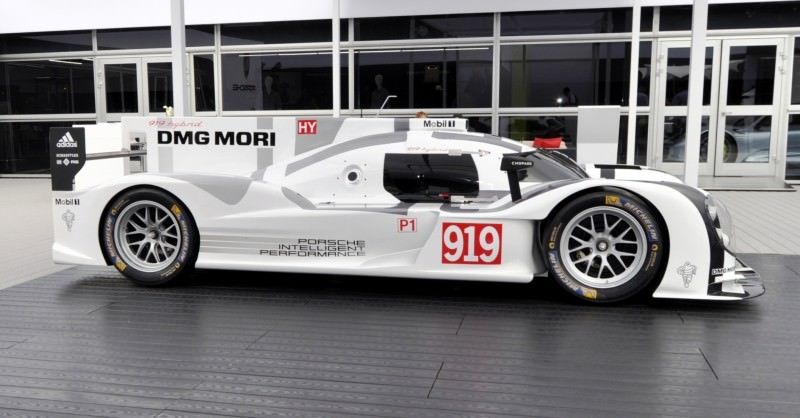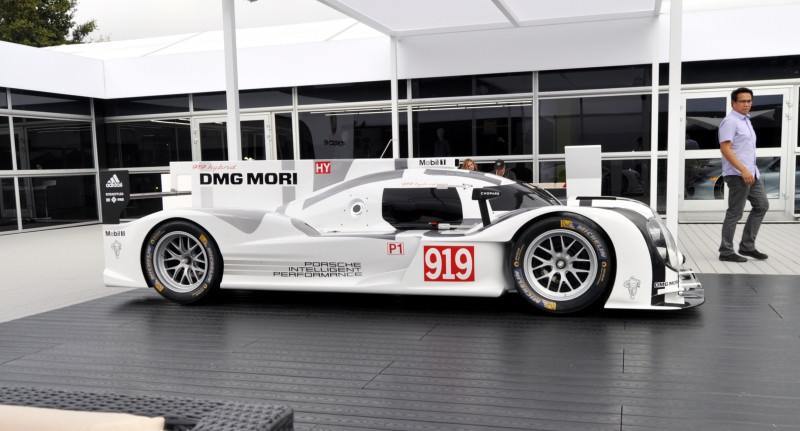Porsche just rolled out its 2015 model-year LeMans P1 car for initial track testing at Yas Marina today, and we see a continuation on most aspects of the 2014 racer.
Porsche is characteristically tight-lipped about what has changed since last year, but has confirmed that the turbo V4 powertrain will continue, along with three electric boosters. But while the 2015 car looks very similar to the 2014 contender, you can be sure that there have been extensive studies and engineering under the skin.
It takes more than a quick look to find any clear changes outside, but we have identified three primary areas outside that appear to be all-new aerodynamic design solutions.
1. NOSE
Up front, versus the 919 Hybrid displayed at the Quail 2014, we see the clearest change overall in the design. Where the 2014 car has a protruding nose cone with three vents in horizontal formation, the 2015 model is totally vent-free. The 2015 car also lacks any cone shape, preferring a bluff and continuous line of carbon-fiber between the hood and the lower intake recess.
2. SIDES / FRONT FENDER VENTS
Here is perhaps the most visible change overall: the 2015 car has a totally reshaped body-side behind the rear fenders. The 2015 model shows a dramatically larger and vaned venting area behind the front wheel-wells.
3. TAIL
Similarly subtle in back by the rear spoiler. Here we see the 2015 car has a much-taller spoiler element that is actually a dual-vane spoiler in its horizontal bar versus the single piece on the 2014.
Subtle changes, as we said, but likely to have a big impact on the track.
TRACK DEBUT FOR 2015 PORSCHE 919 HYBRID
16/01/15
FIA World Endurance Championship WEC, LMP1
Extensive testing with the second generation of the Porsche 919 Hybrid Le Mans prototype will begin 18 January at the Abu Dhabi Yas Marina Circuit.
As scheduled, this marks the start of the 2015 motorsport season for the Porsche Team. The new Porsche 919 Hybrid already had its initial roll-out at the Weissach test track, near Stuttgart, Germany, on 15 December, 2014. As a next step, there will be several performance and endurance tests before the World Endurance Championship (WEC) season opener on April 12 at Silverstone, Northamptonshire.
The new Porsche 919 Hybrid is a comprehensive evolution of last season’s successful car, which marked the return of Porsche to the top class of the WEC in 2014. It features the same innovative drivetrain concept consisting of a 2-litre V4 turbocharged petrol engine, supplemented by an electric motor powering the front wheels, and two energy recovery systems.
PREVIOUS
Full disclosure: this is the 919 design and aero prototype on loan from the Porsche Museum in Germany, and not one of the team’s actual Le Mans 2014 competitors.
Even so, being touchably close to any racecar is enought to get the heart beating faster.
In fact, even cropping these photos has made a big thump-thump in my neck! The closer my eye comes to the quad-beam lighting setup, the more exciting the car seems — even a static model.
Despite much respect for the Audi Motorsport team, the Porsche 919 Hybrid was the favorite on this sofa during June’s Le Mans race. Well, to be fair to Toyota, we mainly just wanted a non-Audi team to win the top LMP1 class. The Audi dominance of the race is both boring and tiresome at this point. There is no way to sugar-coat that.
Sure, they work very hard and are brilliantly skilled as a team.
But nothing would have sent the Audi guys home more humble than being beaten by Porsche on their first year back in the race.
Sigh… can you imagine!?
Maybe next year… when Nissan will also field a LMP1 car — making it a four-way rumble par excellence...!
2014 Porsche 919 Hybrid
Technical Specs
2014 Porsche 919 Hybrid
The vehicle |
|
|---|---|
| Vehicle type | Le Mans Prototype class LMP1 |
| Monocoque | Composite fiber construction made of carbon fibers with a honeycomb aluminum core. |
| On-board system battery | Lithium-ion battery |
Engine |
|
|---|---|
| Engine | V4 engine with turbocharging |
| Engine management | Bosch MS5.6 |
| Engine lubrication | Dry-sump lubrication |
| Displacement | 2.000 ccm |
| Power | > 370 kW (> 500 hp) |
Hybrid system |
|
|---|---|
| Accumulator type | Lithium-ion battery |
| EGU on front axle | Engine Generator Unit (EGU), Power > 250 hp |
Drive/power transmission |
|
|---|---|
| Drive type | Rear wheel drive, all-wheel drive via KERS on the front axle. |
| Clutch | CFRP clutch |
| Transmission | Sequential, hydraulically activated 7-speed sequential racing transmission |
| Differential | Rear differential lock |
| Hybrid construction in CFRP with titanium inserts and cast aluminum housing | Transmission housing |
| Drive shafts | Constant-velocity sliding tripod universal joints |
Chassis/steering/brake |
|
|---|---|
| Chassis | Front and rear multi-link pushrod independent wheel suspension with adjustable shock absorbers |
| Steering | Hydraulically assisted rack-and-pinion steering |
| Brakes | Hydraulic dual-circuit brake system, light-alloy monobloc brake calipers, internally ventilated carbon fiber rear and front brake discs |
| Rims | Forged magnesium wheels |
| Tires | Michelin Radial, front and rear: 310/710-18 |
Weight/volume |
|
|---|---|
| Minimum weight | 870 kg |
| Tank capacity | 68.3 l |
Body |
|
|---|---|
| Height | 1050 mm |
| Width | 1900 mm |
| Length | 4650 mm |

Tom Burkart is the founder and managing editor of Car-Revs-Daily.com, an innovative and rapidly-expanding automotive news magazine.
He holds a Journalism JBA degree from the University of Wisconsin – Madison. Tom currently resides in Charleston, South Carolina with his two amazing dogs, Drake and Tank.
Mr. Burkart is available for all questions and concerns by email Tom(at)car-revs-daily.com.


